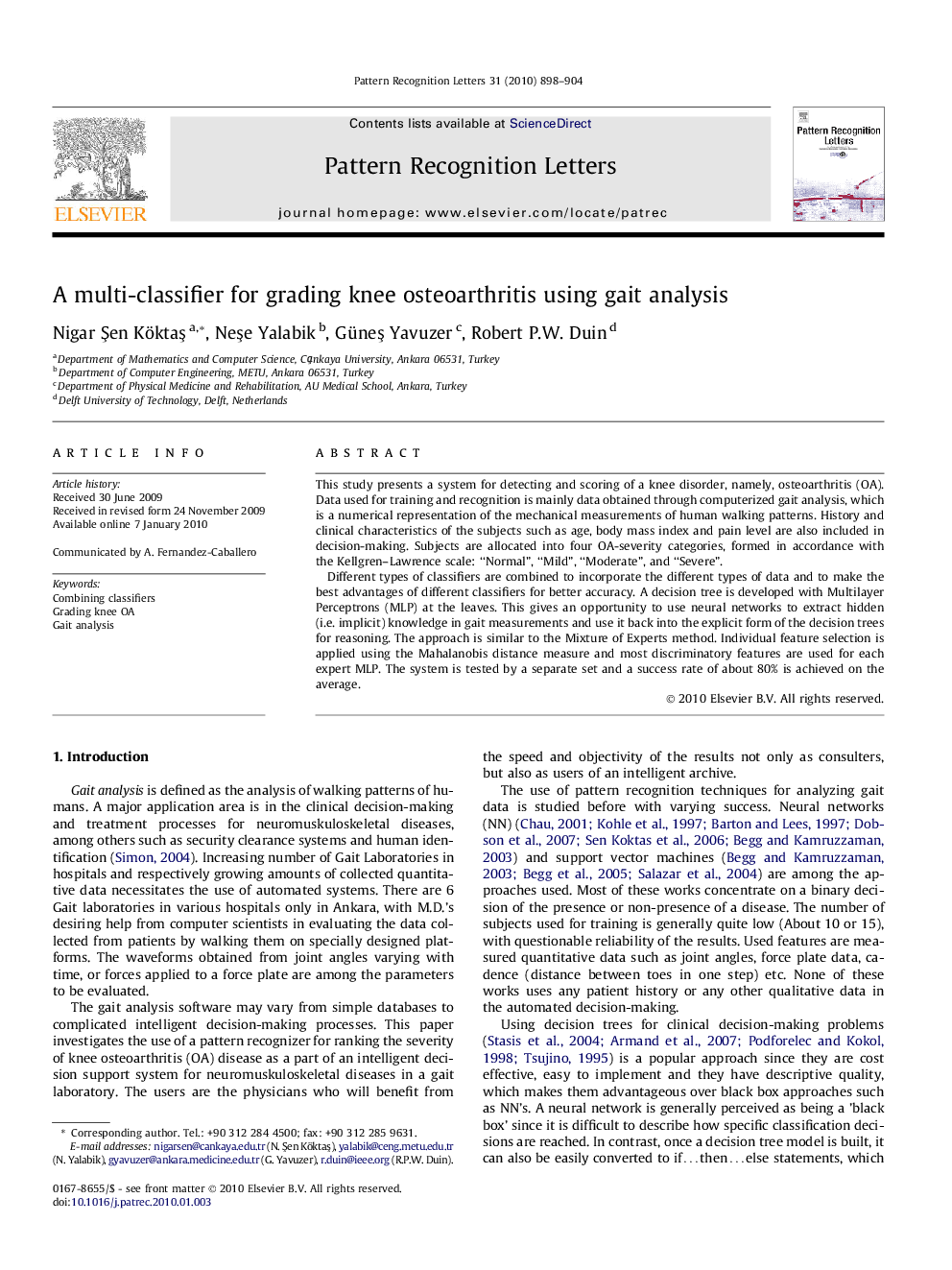| Article ID | Journal | Published Year | Pages | File Type |
|---|---|---|---|---|
| 534455 | Pattern Recognition Letters | 2010 | 7 Pages |
This study presents a system for detecting and scoring of a knee disorder, namely, osteoarthritis (OA). Data used for training and recognition is mainly data obtained through computerized gait analysis, which is a numerical representation of the mechanical measurements of human walking patterns. History and clinical characteristics of the subjects such as age, body mass index and pain level are also included in decision-making. Subjects are allocated into four OA-severity categories, formed in accordance with the Kellgren–Lawrence scale: “Normal”, “Mild”, “Moderate”, and “Severe”.Different types of classifiers are combined to incorporate the different types of data and to make the best advantages of different classifiers for better accuracy. A decision tree is developed with Multilayer Perceptrons (MLP) at the leaves. This gives an opportunity to use neural networks to extract hidden (i.e. implicit) knowledge in gait measurements and use it back into the explicit form of the decision trees for reasoning. The approach is similar to the Mixture of Experts method. Individual feature selection is applied using the Mahalanobis distance measure and most discriminatory features are used for each expert MLP. The system is tested by a separate set and a success rate of about 80% is achieved on the average.
